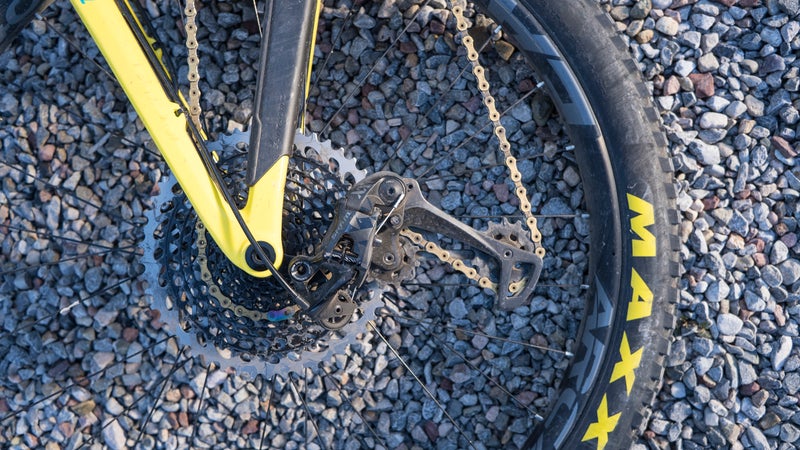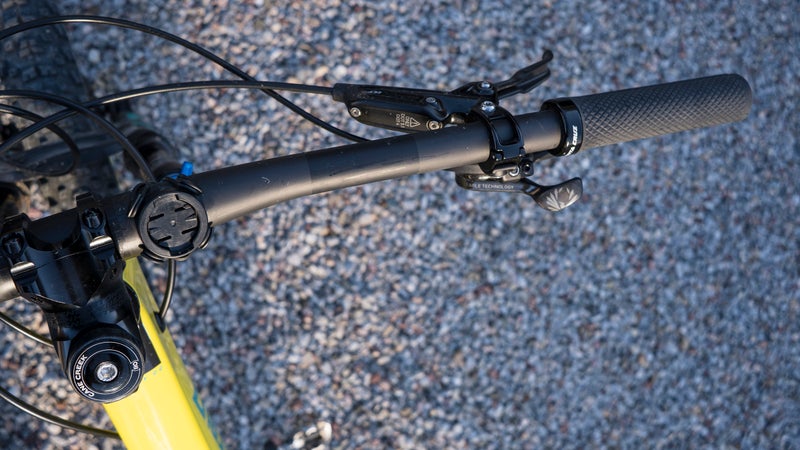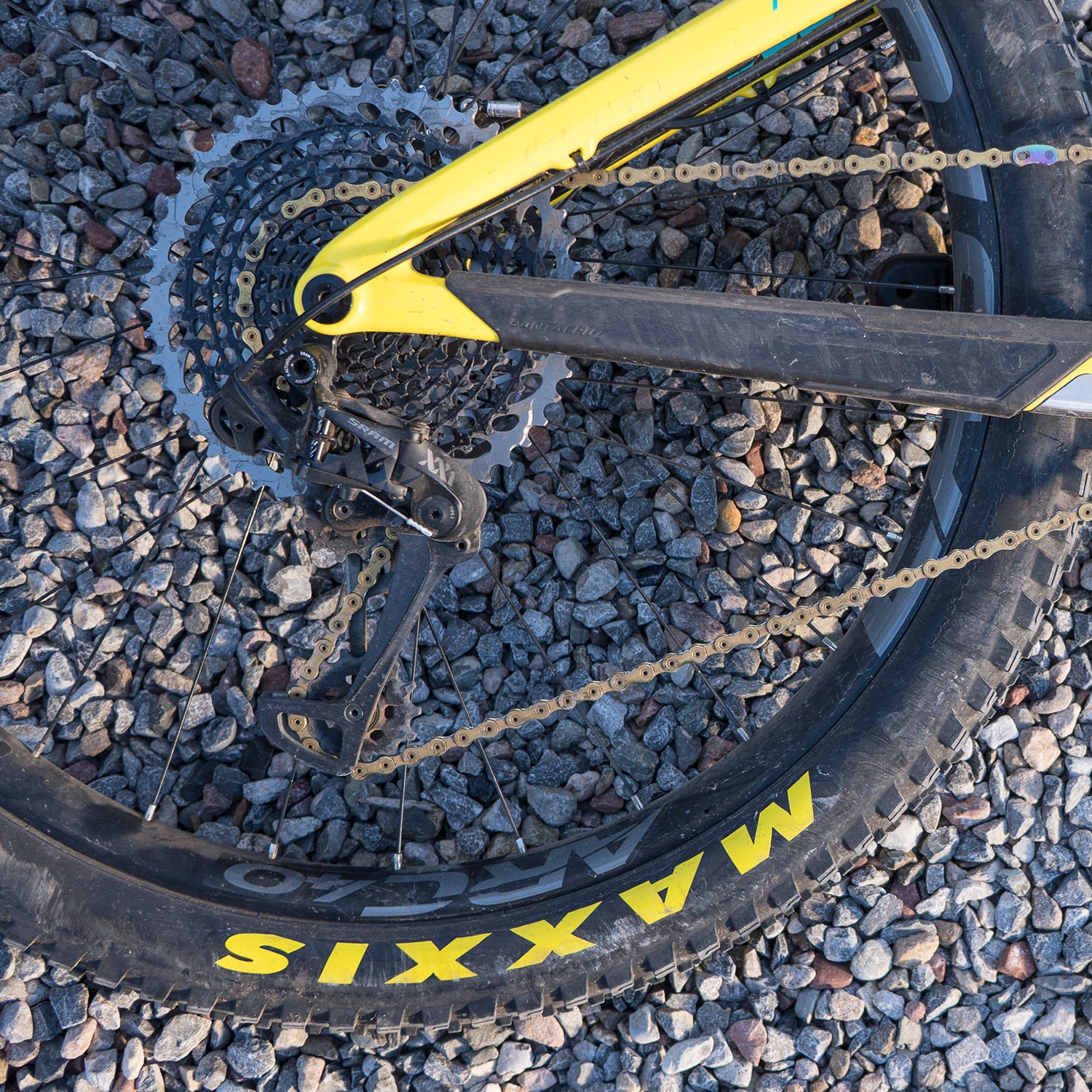It’s been almost five years since SRAM first introduced the 1×11 drivetrain, and the configuration has become so popular that many new bikes are foregoing front derailleur mounts and cabling options entirely. Despite initial reluctance, Shimano has followed with single-ring mountain setups (and all but killed off its triple-ring options), and SRAM has expanded its offerings to cross and road.
There are things about one-ring drivetrains that I like: the simplicity, the elimination of moving parts that can break, the added clearance from a smaller front ring, and the weight savings. I was actually so interested in a 1x setup that, years before SRAM debuted the concept, I jury-rigged my Moots YBB hardtail as a 1×9 and rode it like that for two seasons. But the truth is, because of the range limitations, I’ve never fully embraced the 1x system.
Until now. Having logged three months and nearly 500 miles aboard an , I can honestly say that SRAM has finally created a single-ring setup that is a viable solution for everyone. This could, at last, be the technology that kills the front derailleur.
Without rehashing too much, Eagle adds a twelfth gear to SRAM’s tested 1×11 drivetrains in the form of a dinner-plate-size 50-tooth bail ring. That means you get the same exact gearing as before (10-12-14-16-18-21-24-28-34-36-42), plus a monster granny gear. To be clear, it’s not just a huge ring tacked onto the existing cassette, but a totally new system with cogs located closer together.

That’s a 500-percent gear range, which isn’t quite as broad as the widest Shimano XT 2×11 drivetrain (538 percent), but it’s much closer than previous 1×11 offerings (420 percent). The eight-tooth jump between the last two gears on Eagle is nearly equal to the 10-tooth gap when shifting between big and small front chain rings on a 2x, so it’s effectively like putting your granny gear on the cassette instead of the crank.
It might seem hard to believe that one more gear is that big of a deal. But the twelfth gear matters less than the range it affords. Prior to Eagle, I have always felt that a 1×11 was simply too great a compromise. Most bikes were coming with 30- and 32-tooth chain rings, which often made climbing really difficult, especially where I test bikes—20- and 30-percent grades at 10,000 feet and higher are common in the Sangre de Cristo mountains. But if I ran a small enough gear on the front chain ring for climbing (I favor at 28-tooth at home), I’d run out of top-end gears on flats and descents.
The new 50-tooth cog makes all the difference. The that I’ve been riding with Eagle is a trail 29er that’s light but not crazy so (26.9 pounds), and I’ve yet to find terrain where I run out of gears. My standard Saturday training loop is the ultimate test: 50 miles that includes dirt road grinding, steep techy single track up to 12,000 feet, fast and loose trail on the descent, and five miles of pavement descending. Despite that huge variety, Eagle, which I’m running with a 32-tooth chain ring, has had me covered with all the gears that I’d want. And SRAM is offering five front rings—from 30- to 38-tooth—meaning everyone should be able to find gearing that works.
It’s not just about range, either. SRAM has also improved the shifting quality and feel with a new, highly refined chain and the snaggle-tooth shaping on the chain ring. The chain moves up and down more quietly and smoothly than prior 1×11 versions, and the drivetrain has held true throughout the test without so much as a tweak for cable stretch. I wouldn’t say Eagle is as buttery as Shimano XTR or XT, but it’s close.
About 20 percent of the time, I found a slight delay when shifting from 42 to 50 in the back, like the chain didn’t pick up quickly enough. It’s a bit annoying, but it never missed or failed completely and the occasional hesitation might just be a trade-off for the big jump in gearing. On the other hand, I thought that large gap between the final two cogs would feel weird or too large, but it didn’t bother me at all. Generally, if you need a 50-tooth ring, it’s so steep and brutal that you’re not going to be bothered by how light the gear is. And similarly, it never felt too big when dropping to the 42.

The other concern I’ve had was that the high-tension derailleur and huge range the chain had to cover would lead to premature and excessive wear, especially in the first few cogs. The steel-and-alloy 11-speed cassette has proven reasonably tough in the past, and SRAM has addressed durability with the improved tooth shaping and chain fit. And while I only have some 500 miles on the gear so far, there’s no sign of early wear.
SRAM is offering the gear in two levels—XX1 Eagle, which is top of the line, featherweight, and aimed at racing and XC riders—and the more robust XO1 Eagle, for trail riders and enduro. I’ve only ridden the XX1 variety, but the ride quality is said to be equal on the lower tier. Both sets are gorgeous, with XX1 coming in a wild gold bling and XO1 in a gloss black (there’s even a matching black chain).
Just like when XX1 launched and was the only 1×11 system out there, Eagle is not cheap—$1,480 and $1,193 for XX1 and XO1, respectively. And since none of the 11-speed gear will be compatible with Eagle, it will be an investment to upgrade. (Though, on the bright side, SRAM kept the same XD cassette driver, so you can keep your existing wheels.) Having said that, SRAM has been diligent about rolling out lower-priced 1×11 drivetrains—in addition to the top two tiers, there’s X1, GX1, NX1, and even EX1 for e-MTBs—so I have to think that there’s more affordable 1×12 options in the works.
That’s a good thing. Now that SRAM has nailed the execution on the single-ring drivetrain, I imagine that more and more mountain bikers will want to try it out. And as manufacturers continue expanding their 1x-specific frame designs, front derailleurs, at least on the mountain side, are rapidly starting to look like relics.


